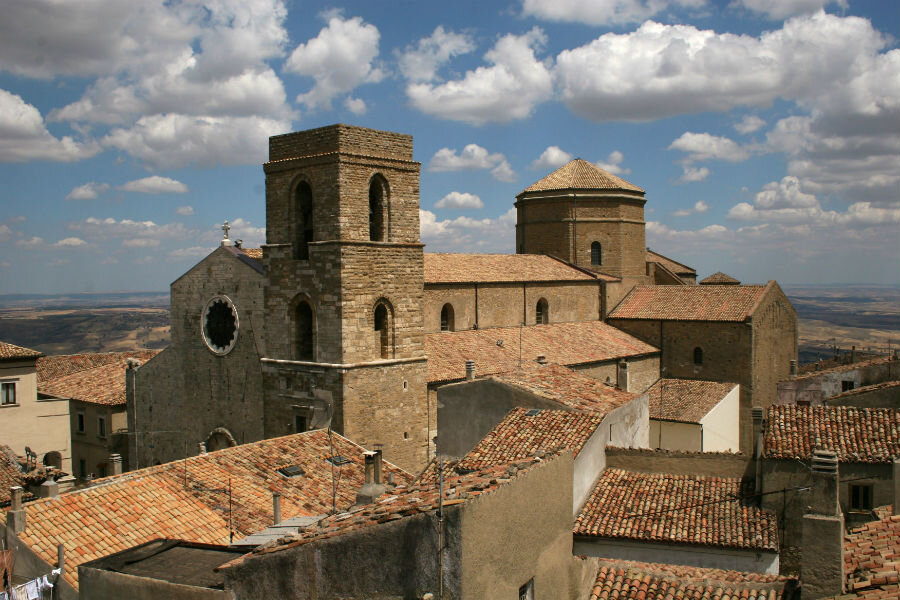Acerenza is located in the Region of Basilicata, or Lucania, in the Province of Potenza, Italy. It is perched on a rocky tufa spur overlooking the upper valley of the Bradano river, and is one of the most ancient settlements in Basilicata. Acerenza is regarded as one of the 50 most beautiful villages in Italy.
It was founded by the ancient inhabitants of the territory, the Osci (1st millennium BC), and served as the region's capital for several hundred years. Strategically located at the junction of important trade routes, Acerenza served multiple functions under different eras of rulership: a municipium and praefectura under the Romans, a gastaldat under the Lombards, and an important castle throughout the Middle Ages. Its diocesis was founded according to some sources by Saint Peter himself.
Acerenza is often called "cathedral city" for the imposing temple that towers in the center of the ancient village, dedicated to Santa Maria Assunta and San Canio. In this small treasure chest of antiquity, beautiful fountains and palaces abound, many of which have internal courtyards, decorated with coats of arms and stone portals. Between the end of the seventh century and the early twelfth century, Acerenza enjoyed its most glorious period. It was an era of both religious and political peace and growth. Under Lombard rule, it became the capital of the great Gastaldato of the Duchy of Benevento, and its territory encompassed all of ancient Lucania. In 799 the Bishop Leo II had the large cathedral built - the most Romanesque-Norman monument in the entire Mediterranean area. The cathedral stands on a very ancient place of worship dedicated to Hercules Terapeuta. The history of the cathedral beyond Bishop Leo II is still a mystery. Some scholars connect it to the religious order of the Templars and its founder, Ugo De Paynes. Around the cathedral extends an enchanting medieval village where history and culture are tangible at every step - from the church of S. Laviero (17th century) to the noble palaces and their portals, to the 15th century Franciscan convent which today houses the Museum of the Carved Woods, a true jewel of the artisan tradition of the entire upper Bradano area.
The village of Acerenza doesn't just offer a rich plethora of built heritage and art. It also features a gorgeous natural reserve ecosystem that makes it an incredibly unique visiting experience. The Bosco S. Giuliano Park is a protected and biodiverse environmental reserve, and the artificial lake off the River Bradano adds to the idyllic views surrounding the village.
It is not surprising that from such a beautiful landscape and ecosystem comes a strong and delicious culinary tradition that is part and parcel of the region. The cuisine in Acerenza carries on the rich heritage of its rural past, featuring a vast assortment of Mediterranean delicacies and specializing in wine and olive oil cultivation.
Today, like most of the small Lucanian municipalities, Acerenza is unfortunately experiencing the problems of an aging population and the emigration of young people to the big cities. Consequently, the village is suffering from a rapid depletion of its labor and severe economic decline. The region is predicted to be abandoned before long. For these reasons, it is essential to reconstruct and drive attraction towards these territories in order to activate opportunities for economic and sustainable development along with other interventions that take a long-term planning approach toward the revitalization of the region.












